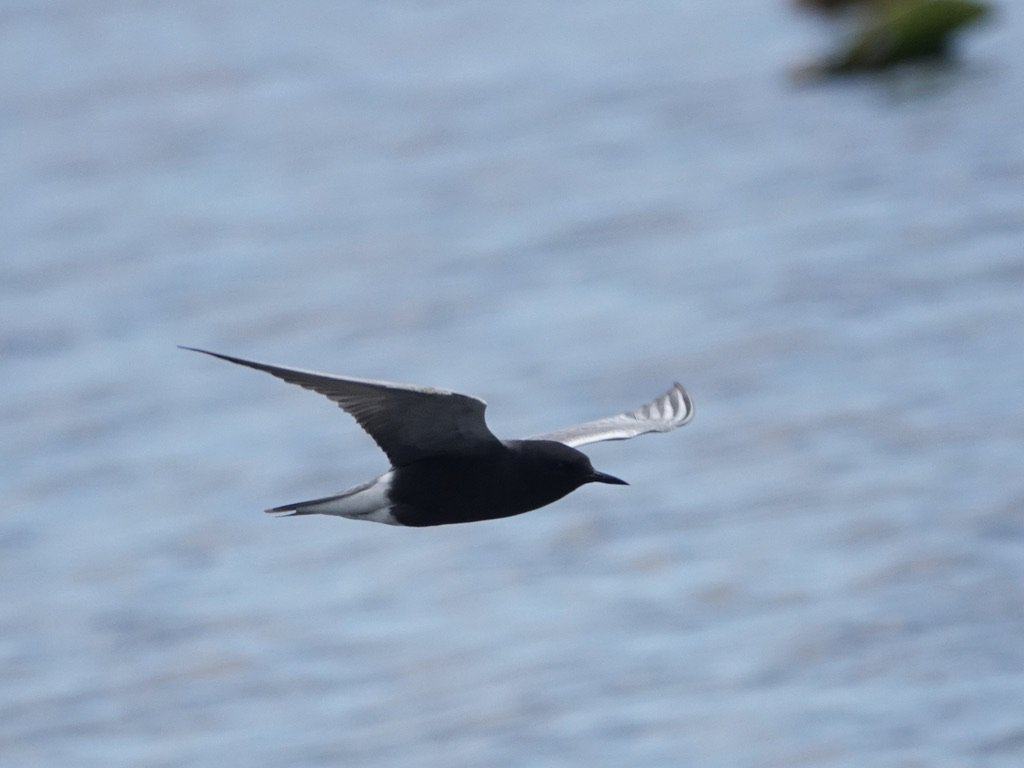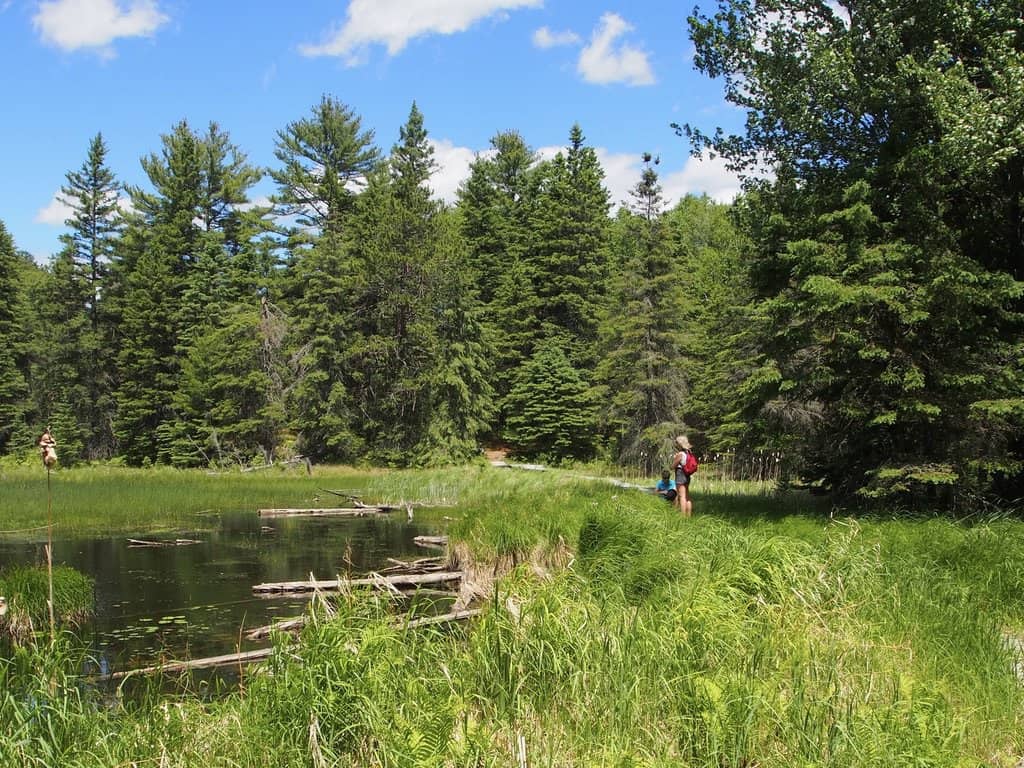Envisioning what nature protection could look like in 20 years
Peterborough Examiner – December 16, 2022 – by Drew Monkman
Imagination is critical to sustainable and just futures for life on Earth. Imagining a species-rich future that also meets society’s needs engages with emotions that motivate action. As the COP 15 UN Biodiversity Conference wraps up in Montreal, I’d like to provide speculative fiction on what a nature-rich Peterborough and Peterborough County could look like, given the necessary political and community will. Everything I’ve included is possible, plausible and desirable.
It’s May 2043, and for anyone who remembers the dire predictions of biodiversity loss from 20 years ago, it’s no less than astounding how local nature has been protected, restored and enhanced. Yes, the climate itself has changed more or less as predicted. Spring weather now arrives about a month earlier and summers are much hotter. In fact, about one-third of the days are over 30 C. Severe wind and rainstorms are more frequent, too. Mild fall conditions last well into December, and the cold, snowy winters of the past are but a fading memory.
A new Peterborough
Although Peterborough’s population has now reached 130,000, all of the new housing has been provided without expanding the city’s boundaries, thanks to the 2024 intensification and redevelopment plan. Low-rise apartment and condominium buildings, almost all with shops on the ground floor, are everywhere. Many are on suburban properties where single family residences once stood. Three of the city’s aging strip malls have even been transformed into nature-rich ecovillages which house hundreds of families. Most houses and commercial buildings now have solar panels and many have roof-top food gardens.
Despite intensification, nature in Peterborough is richer than ever. Bold leadership from city council was essential in making this happen. The integration of biodiversity protection into the planning process was pivotal as was achieving the conservation measures established in the city’s Official Plan of 2022. Three hallmark projects were the restoration of the urban tree canopy with mostly heat-tolerant southern species, the adoption of a multi-year plan to protect pollinators and a city-wide biodiversity project which encourages landowners, schools, and businesses to naturalize their properties and to bird-proof their windows. Some projects even qualify for a 10% property tax reduction.
Change can be seen everywhere. Parks and other kinds of greenspace are now with a 10-minute walk no matter where you live. The Parkway Trail and the new Otonabee River and Little Lake Trail are managed not only as walking and biking paths but as wildlife corridors; neighbourhood-level green corridors connect pollinator gardens in parks and on private property; and the mowing of grass in city parks and along roadsides is half of what it used to be since so many lawns have been naturalized.
At the fully-protected Fairbairn Street Wetland and at two locations along the Otonabee River, there are observatories where people can sit and unobtrusively observe wildlife. In many city parks, decaying or dead “wildlife trees” with large cavities for nesting birds are also protected and their main branches kept safely in place.
Another particularly exciting project has been the reinvention of Riverview Park and Zoo. Its focus is to showcase the wildlife and ecosystems of central Ontario. From the new aviary to its woodland, grassland and wetland exhibits, it’s a one-stop destination to learn about our native wildlife. Like the Camp Kawartha Environment Centre and Ecology Park, the zoo also demonstrates how people and nature can co-exist so that both can thrive.
Environmental Action Days have also become a hugely popular city initiative. They engage citizens with Peterborough’s natural heritage. Mentored by local experts, volunteers of all ages help control invasive plant species, plant native vegetation, pick up garbage and even monitor wildlife species through citizen science. Actions such as these have resulted in a huge change in attitudes. The fact that people actually used to let their cat roam freely now seems almost unbelievable.
In the County
Under the leadership of a series of progressive female wardens, Peterborough County has almost succeeded in protecting 30 percent of its lands. A huge part of the credit goes to the Kawartha Land Trust whose properties have grown ten-fold. We’ve also seen the expansion of the Greenbelt into the south of the county. Another key factor has been the greatly expanded role of Conservation Authorities. This began with the change of provincial government in 2026. In addition to expanding its lands and jurisdiction, Otonabee Conservation has now fully restored the Miller Creek Wetland, the Otonabee Gravel Pit Conservation Area is now maintained as habitat for waterfowl and migrating shorebirds, and a 1,000-acre grassland reserve has been established near Warsaw. This provides much needed habitat to species like bobolinks and meadowlarks.

Exciting developments also occurred in the 2020s when the Peterborough County Forest and a corridor from Rice to Stoney Lakes were recognized as an “Other Effective Area-Based Conservation Measure” under the Biodiversity Convention. This connects to an Indigenous Protected Conservation Area (IPCA), led by Curve Lake First Nation, which extends from Kinomagewapkong-the Teaching Rocks (formerly known as the Petroglyphs Provincial Park) north to Jack Lake, a traditional hunting territory. Here, Curve Lake First Nation has the primary role of protecting, conserving and educating the public about this valuable ecosystem.
Diverse recreational, resource, conservation, and Indigenous interests also came together to develop a trail and multi-use plan for the landscape lying between Kawartha Highlands and the renamed Quinquish-Canada Jay (formerly Queen Elizabeth II Wildlands) Parks. This includes protection of the Catchacoma Forest, the largest stand of old growth eastern hemlocks in the entire province. Some of the partnerships that made this happen were the result of leadership from the County’s new Environmental Advisory Committee.
The Kawartha and Indigenous land trusts also played important roles in supporting community initiatives. This included returning some natural areas to the Michi Saagiig Anishinaabeg Indigenous people for ceremony, harvesting and learning on the land. Now, two of the highlights of the year in the Kawarthas are Indigenous-led festivals that celebrate the Manoomin (wild rice) harvest and the return of salmon and eels to the Kawartha Lakes. The return of these species was thanks to the retrofitting of dams on the Trent-Severn Waterway.
Driving county and township roads, it’s also evident how road maintenance practices have changed. Gone is the indiscriminate slashing of roadside vegetation. Farmland, too, looks different. It is now managed with conservation values in mind. Thanks to government subsidies, farmers can now afford to protect and re-establish hedgerows, woodlots, and wetlands. Even hayfields are managed to protect nesting birds like bobolinks. The blossoming of the local food movement has also meant that much more land now produces fruit and vegetables instead of industrial corn and soy.
Another change is close to the heart of the legions of local birders. The Lakefield Sewage Lagoons are now managed with both water treatment and wetland habitat in mind. The viewing tower erected in 2024 is hugely popular. The lagoons remain the number one birding hotspot in the entire county.

Health and education
The extent of change is also evident in health care and education. It’s now common for health professionals to prescribe spending time in nature to patients. This is because of its proven mental and physical health benefits. In fact PRHC now has a one-acre healing garden.
Schoolyards, along with the entire curriculum, have been transformed. Every school now has pollinator and vegetable gardens along with far more trees and shrubs. Caring for these has even become part of the curriculum. Nature education has taken centre stage, not as rote and drill but rather as wonder and awe. A real game-changer was the success of the Pathways to Stewardship and Kinship program which promotes and supports healthy childhood development, community connection and environmental stewardship through an early and ongoing relationship with nature. The province has now integrated much of the Pathways approach into the curriculum.
Teachers take their classes outside more than ever, often visiting nearby parks, streams and wetlands. So much walking and outdoor nature play has even let to a decrease in obesity. They also make regular day and overnight visits to environmental education centres like Camp Kawartha and the new centre established in the Curve Lake IPCA between Stoney and Jack Lakes. The curriculum now embodies Indigenous values such as gratitude and reciprocity towards nature. This shift in ethics has led to a deep sense of identity with the Kawartha bioregion and the need to protect it. One particularly telling change is that children now know local animals, plants and ecosystems as well as they do pop stars and corporate logos!
Biodiversity loss is a global crisis and it’s getting worse. The sixth mass extinction in Earth’s history has already started. Yet, as I’ve tried to show here, there are solutions, but it will take transformative change at every level, including a much greater role for Indigenous peoples and Indigenous values. What’s not clear is whether we come together to act in time.